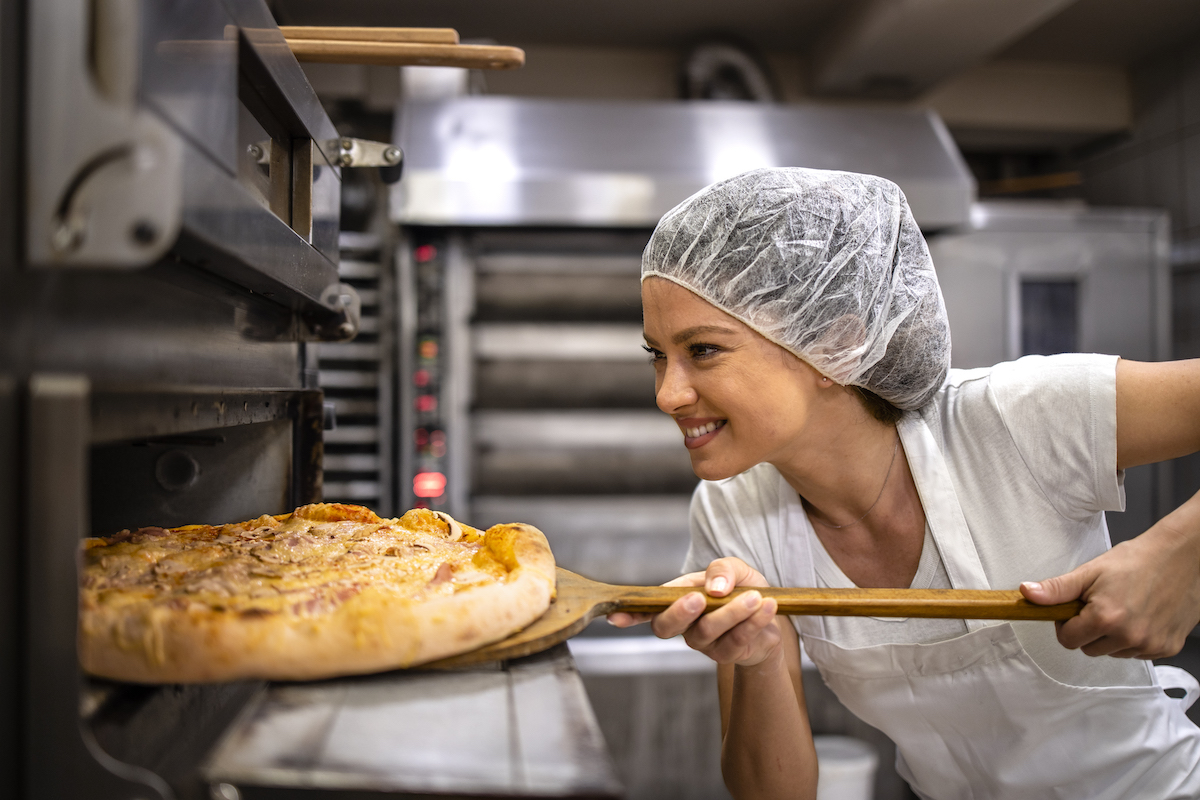- According to the CEO of Talroo, pizzeria owners and managers should ask themselves a crucial question: What are the needs and wants of today’s pizza industry workers?
- Accommodating candidates’ desire for a job that offers flexibility, growth and security is the first step in attracting top talent and putting an end to the staffing crisis.
Related: How independent pizzerias and local delivery services can join forces
By Thad Price, CEO of Talroo
Since the start of the pandemic, essential workers have become exceedingly difficult to find. Restaurants have been short-staffed with record wait times, and demand for drivers has meant longer deliveries for colder pizza. So why is it so hard to gain and retain staff in the pizza industry? Better yet, how can managers attract more candidates in this mismatched market? Find out why and remedy your staffing woes with these pro tips.
Peek into Your Candidate’s Mind
If the pandemic showed us one thing, it’s that essential workers are our economic backbone. The current U.S. unemployment rate shows nearly 3.7% of the population is actively looking for work. So where are they?
The reality is, we’re not short of people—we’re short of staff. The question we need to ask is: What are the needs and wants of today’s pizza industry workers?
First, put yourself in the mind of your candidate. What do they want? What are their concerns? Some concerns include quality pay and job security as inflation becomes a growing problem in today’s marketplace. Workers are looking for jobs with flexibility, growth and security to settle the score of a teeter-tottering economy. Thus, accommodating these needs is the first step in attracting top talent and putting an end to the staffing crisis.
Here are a few benefits to consider, including when posting your job ads:
Flexibility
Unfortunately, workers can’t toss dough remotely. But, according to ABC News, “60% of [applicants] said they would prefer to find a job where they can work from home. That doesn’t square, of course, with restaurant gigs.” So, instead of scrapping flexibility altogether, redefine how it looks in the pizza industry. While “flexibility” may not hold its 2020 definition, it can be mirrored through controlled shift schedules, paid time off, childcare benefits and more. Flexibility extends far beyond the home office and will highlight the work/life balance your candidates crave.
Career Growth
With inflation growing as an economic concern, it’s time to turn “dead-end-jobs” into fossils and trailblaze growth opportunities for high-performing employees. With 39% of workers believing their jobs will be obsolete in five years, employers must address concerns of job security, opportunity and prosperity to promote stable career trajectories.
According to a January 28 article in the Washington Post, mending the staff shortage means offering “life insurance, mental health services, college tuition and more paths to career advancement.” As inflation runs rampant through the American economy, managers in the pizza industry also need to develop promotion plans to attract determined workers and meet the needs of today’s competitive market.
Related: Peter Piper Pizza gets creative to retain workers

Benefits
“The Great Resignation” is turning up the heat on the pizza industry to hire and retain staff that keep the ovens burning. According to a January 2022 survey of 1,200 restaurants by the Independent Restaurant Coalition, 84% of all restaurants reported raising wages. Nearly 40% have added paid sick leave for the first time, and more than 20% have added paid vacation during the pandemic.
However, as average hourly wages rise, companies are realizing that salary isn’t the only piece of the pie. Addressing issues like childcare, health insurance and tuition chips away at the disparity that hourly workers have faced for years. Include these added benefits and you will far surpass the competition by recognizing the needs of your hourly staff.
Cost of Vacancy vs. Cost to Hire
When short-staffed and under stress, hiring managers make big decisions too hastily. Those rash decisions can come at a high price and jeopardize your restaurant in the process. So, let’s break down the costs.
To better understand your staffing investment, compare these three metrics:
Cost of Vacancy
While it varies by industry, the “cost of vacancy” can be estimated by dividing “company revenue per employee” by “number of annual work days (220).” This gives you the average revenue produced by an employee daily. Just note that it’s difficult to measure the negative impact that open roles have on productivity. It disintegrates employee engagement and team morale, which makes it even harder to tie a monetary value to these metrics.
Cost of a Bad Hire
The U.S. Department of Labor puts the cost of a bad hire at up to 30% of the employee’s first-year wages. That means if you hire an employee for $70,000 a year, the employer expense could be as high as $21,000. These factors include lost productivity and customers as well as damage to your reputation and employer brand.
Cost to Hire
According to the Brandon Hall Group, “the average cost to hire an essential worker is $340, and for organizations with 1,000 employees or less, the cost is $670.”
Create Smart Job Titles
Smart job titles are new to the market and showcase benefits to top-tier restaurant professionals. They allow you to use recruitment analytics to check your job post’s reach along with the best-performing job titles and descriptions. You also have the power to track your job posting progress, edit the job description and manage your budget. These titles give you the ability to vet and select candidates from the get-go and ensure you find the best-suited staff for your pizzeria.
Related: How to ease stress for your pizzeria’s servers
Highlight Development Programs
If you want great hires, don’t simply set their sights on the “now,” but instill a vision for a bright future. “We do make pizzas—it’s how we make money,” said Cari Haller, Pizza Hut’s talent acquisition manager. “But we want to develop and encourage people to become good leaders.” Development programs are becoming crucial for retention, so invest in education, managerial training and promotional plans.
Traditional vs. Programmatic Job Advertising
Traditional job advertising allows you to have a fixed budget while using old job data to inform decisions as to where to post your jobs. The only downside is that the traditional approach doesn’t track how your job posts are performing on each site, nor does it target job seekers. So, when your budget is declining, your job bids become scarce and can get lost in the sea of the internet.
Programmatic job advertising takes a profile-driven data approach. It monitors candidate behavior to match the right job seeker to your job listing. It then tracks which sites are gaining the right traffic, turning bids up on the sites that are working and down on the sites that are not. While your budget may not be fixed, it still delivers even higher caliber candidates due to artificially intelligent targeting.
Create a Thorough Onboarding and Offboarding Process
Reputation is everything. To retain brand identity and gain quality referrals, prioritize offboarding just as much as your onboarding. Ensure that onboarding sets clear goals and expectations and supports employee expertise. When offboarding, make the experience as positive as possible and set your people up for success in and out of the pizza industry.
 Thad Price is CEO at Talroo, a data-driven job and hiring event advertising platform that helps businesses reach the candidates they need to build their essential workforce. Connect with him on LinkedIn at https://www.linkedin.com/in/thad-price-2368b/.
Thad Price is CEO at Talroo, a data-driven job and hiring event advertising platform that helps businesses reach the candidates they need to build their essential workforce. Connect with him on LinkedIn at https://www.linkedin.com/in/thad-price-2368b/.













